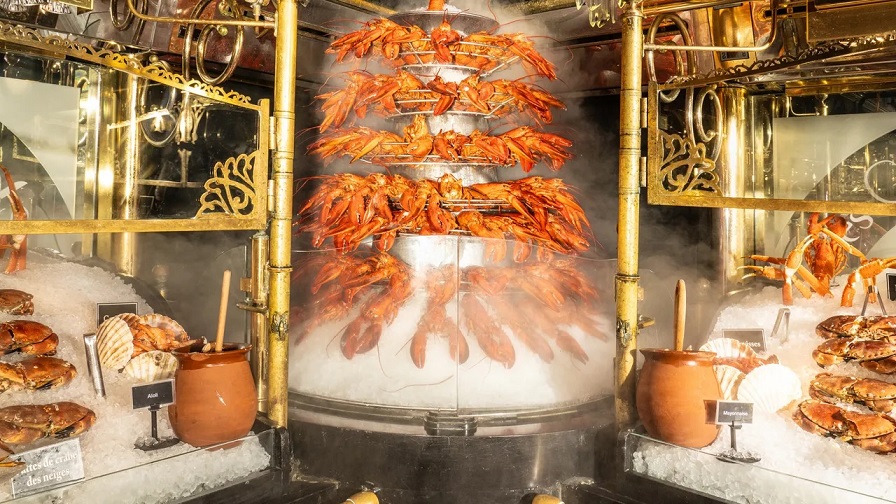
Dare to Try? Europe’s 5 Most Unusual Traditional Foods Explained
Europe is renowned for its rich culinary traditions, from Italian pasta to French pastries. But beyond the well-known dishes, the continent hides some truly bizarre delicacies that challenge even the most adventurous eaters. If you’re a foodie seeking the extraordinary, here are five of Europe’s most unusual traditional foods—would you dare to try them?
1. Casu Marzu (Italy) – The Infamous “Maggot Cheese”
Origin: Sardinia, Italy
What It Is: A fermented sheep’s milk cheese filled with live insect larvae
Casu Marzu, which translates to “rotten cheese,” is one of the world’s most controversial foods. This Sardinian delicacy starts as Pecorino cheese but is left to ferment further by cheese flies (Piophila casei), which lay eggs inside. The hatching larvae break down the fats, creating an extremely soft, almost liquid texture.
Why It’s Unusual:
- The cheese is eaten with live maggots still inside (though some remove them).
- The larvae can jump when disturbed, so diners often wear eye protection.
- It’s technically illegal due to health concerns, but still made and consumed in secret.
Taste Profile: Intensely pungent, spicy, and creamy with a strong aftertaste.
2. Hákarl (Iceland) – Fermented Shark Meat
Origin: Iceland
What It Is: Greenland shark meat that’s been fermented and dried for months
Hákarl is a traditional Icelandic dish made from the flesh of the Greenland shark, a species whose meat is toxic when fresh due to high urea and trimethylamine oxide content. To make it edible, the shark is buried underground for 6–12 weeks to ferment, then hung to dry for several months.
Why It’s Unusual:
- The ammonia-rich smell is so strong that many compare it to cleaning products or rotting fish.
- It was historically eaten by Vikings as a survival food.
- Often served with a shot of Icelandic schnapps (Brennivín) to help wash it down.
Taste Profile: Fishy, chewy, and overwhelmingly ammonia-like—definitely an acquired taste.
3. Balut (Popular in the Philippines, but Eaten in Some European Countries)
Origin: Commonly associated with Southeast Asia, but also consumed in parts of Eastern Europe (e.g., Romania, as “ouă de găină cu pui”)
What It Is: A fertilized duck or chicken egg with a partially developed embryo inside
Though most famous in the Philippines, balut is also eaten in some European countries with Asian immigrant communities. The egg is boiled alive, and the contents—including the duckling’s bones, feathers, and beak—are eaten directly from the shell.
Why It’s Unusual:
- The sight of a partially formed bird can be shocking to first-timers.
- The broth inside is savory, but the texture of the embryo is gelatinous and crunchy.
- Considered a street food snack and believed to be an aphrodisiac.
Taste Profile: Rich, slightly sulfuric, with a mix of textures from soft to crunchy.
4. Blutwurst (Germany) – Blood Sausage
Origin: Germany (also found in Austria, Poland, and other European countries)
What It Is: A sausage made from congealed animal blood, fat, and spices
Blutwurst, or blood sausage, is a staple in German cuisine, especially in regions like Bavaria. It’s made by cooking blood (usually pork or beef) with fillers like barley, onions, and fat until it thickens into a sausage.
Why It’s Unusual:
- The dark, almost black color can be off-putting to some.
- Often served cold or fried, with a texture ranging from soft to grainy.
- Similar variants exist worldwide (e.g., British black pudding, Spanish morcilla).
Taste Profile: Earthy, metallic, and slightly spicy, with a dense, crumbly texture.
5. Smalahove (Norway) – Whole Sheep’s Head
Origin: Western Norway
What It Is: A traditional dish made from a boiled or smoked sheep’s head, including the eyes and brain
Smalahove (meaning “sheep’s head”) was originally a poor man’s meal but is now a festive dish, especially around Christmas. The head is salted, dried, and boiled for hours before serving.
Why It’s Unusual:
- The entire head is presented on a plate, sometimes with the wool still on.
- Diners typically eat the eyes, cheeks, and even the brain.
- Traditionally eaten starting with the ear (considered the best part).
Taste Profile: Similar to lamb but more gelatinous, with a strong, gamey flavor.
Final Thoughts: Would You Try Them?
Europe’s most unusual foods aren’t just about shock value—they reflect deep cultural histories, survival techniques, and regional pride. While some may seem extreme, they offer a unique way to experience local traditions.
Which one would you dare to taste? Let us know in the comments!





















